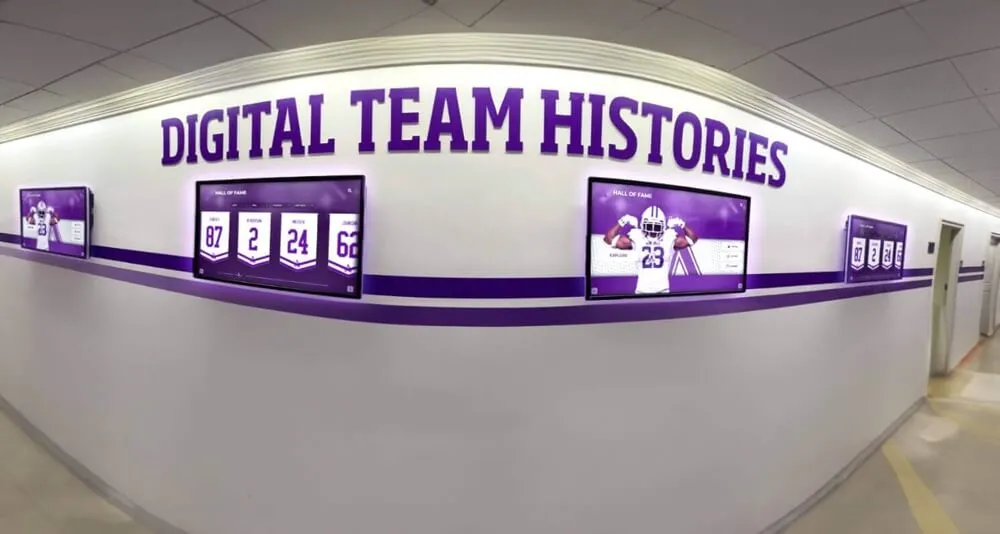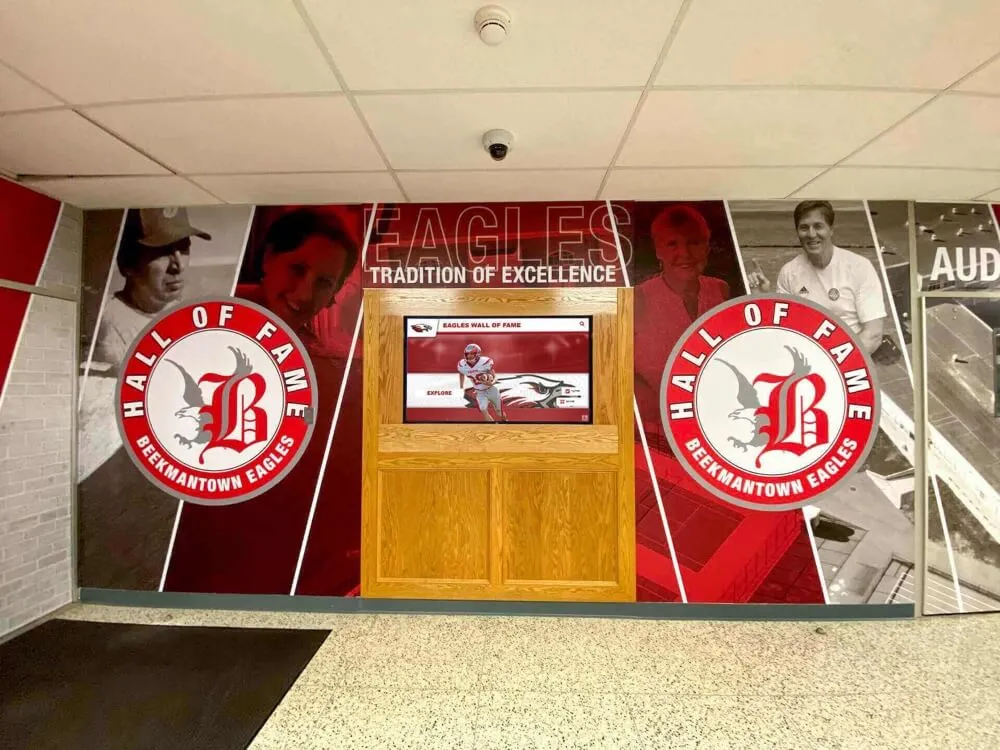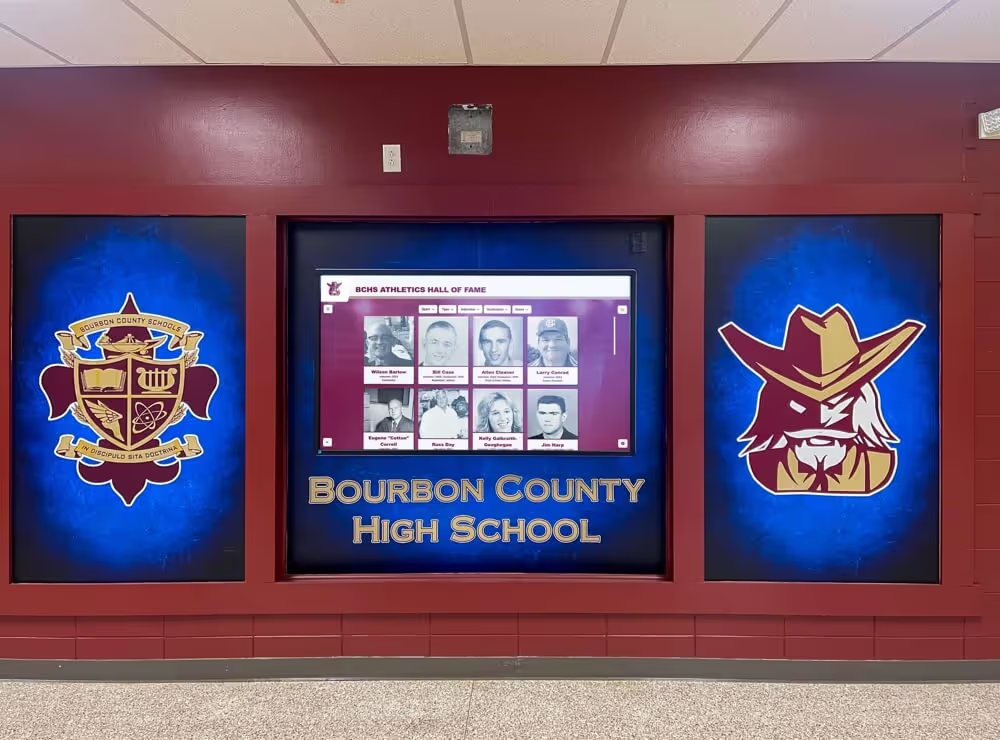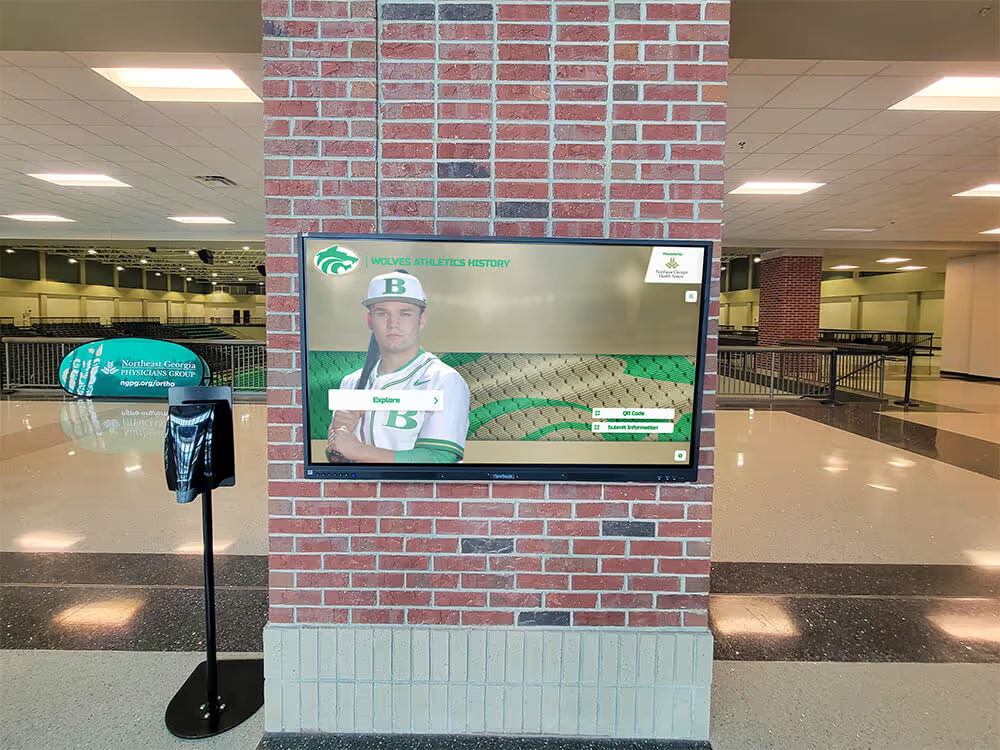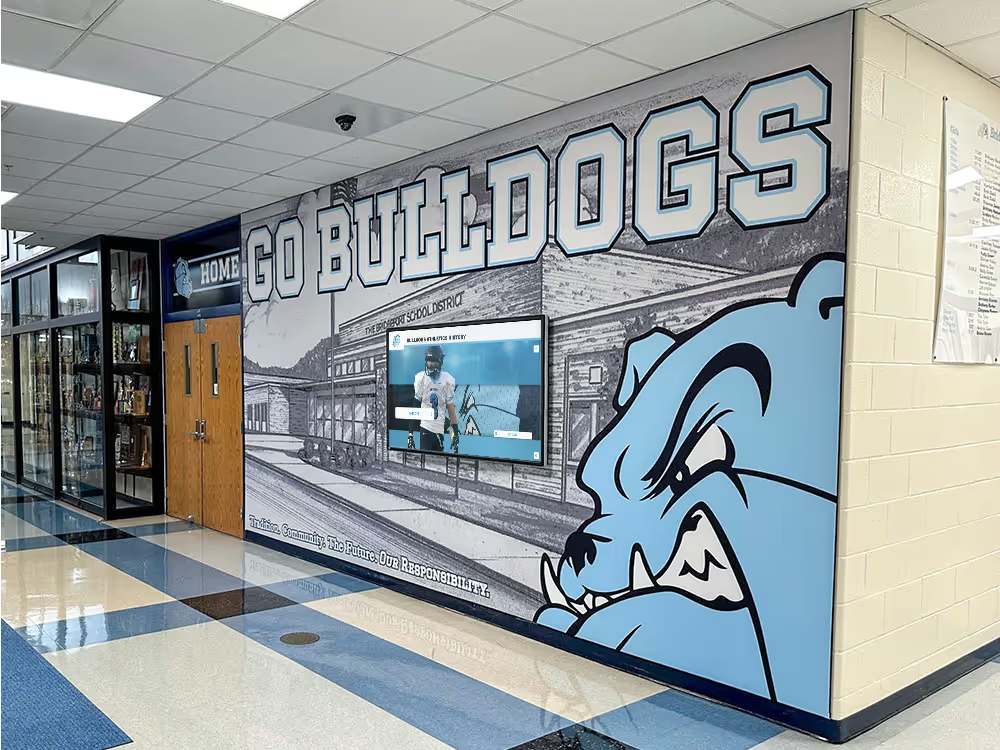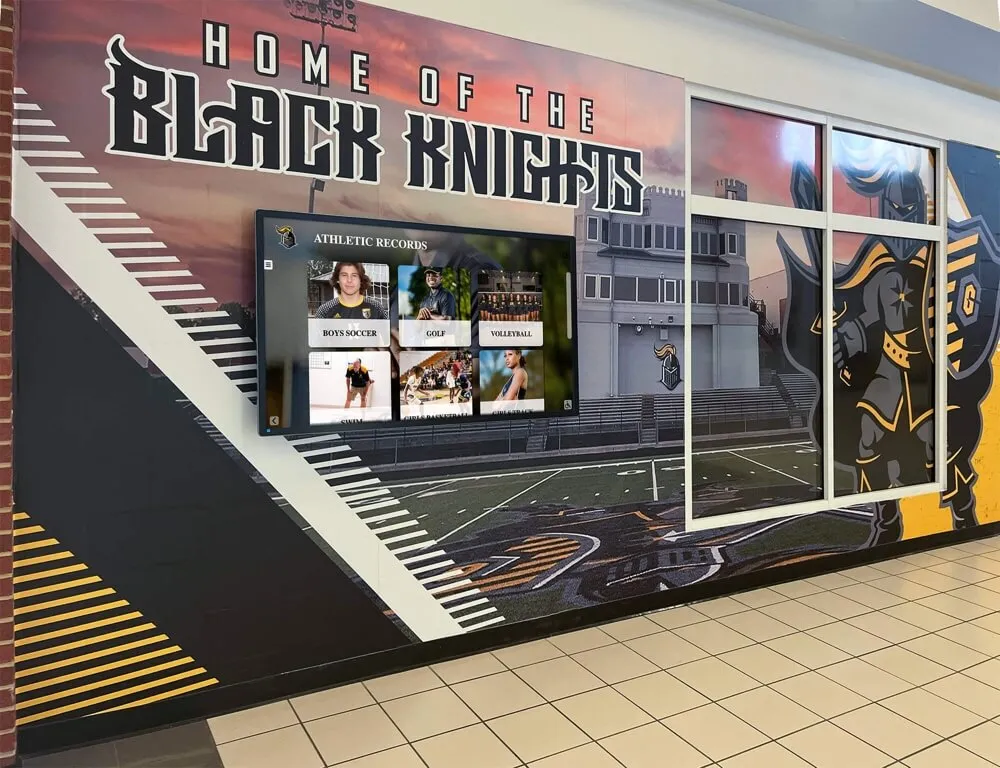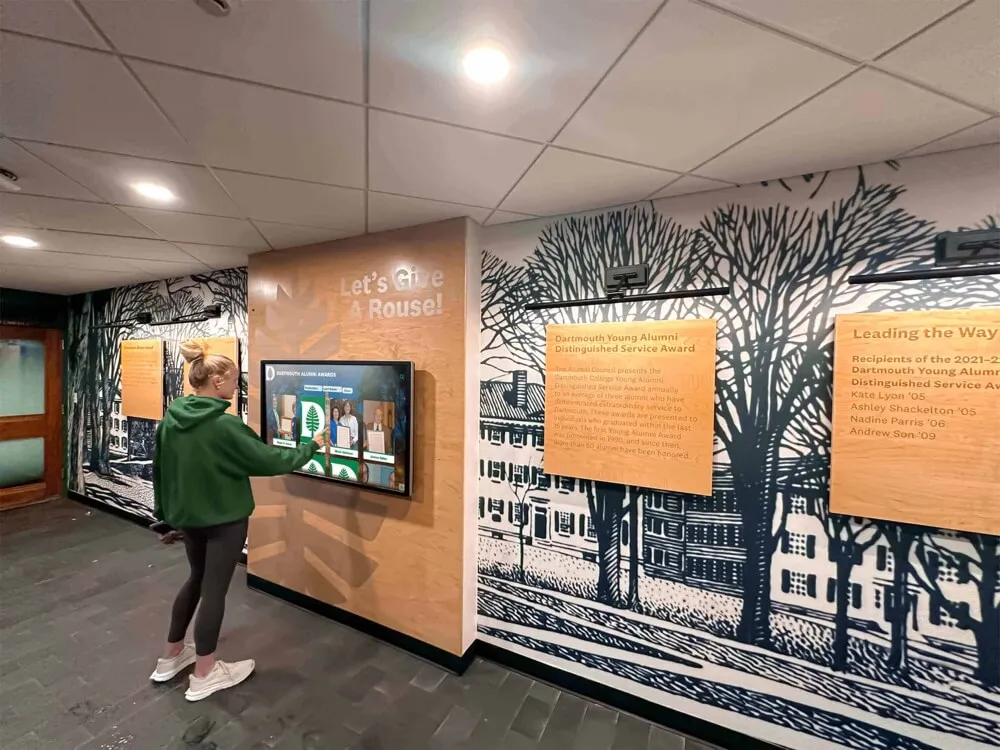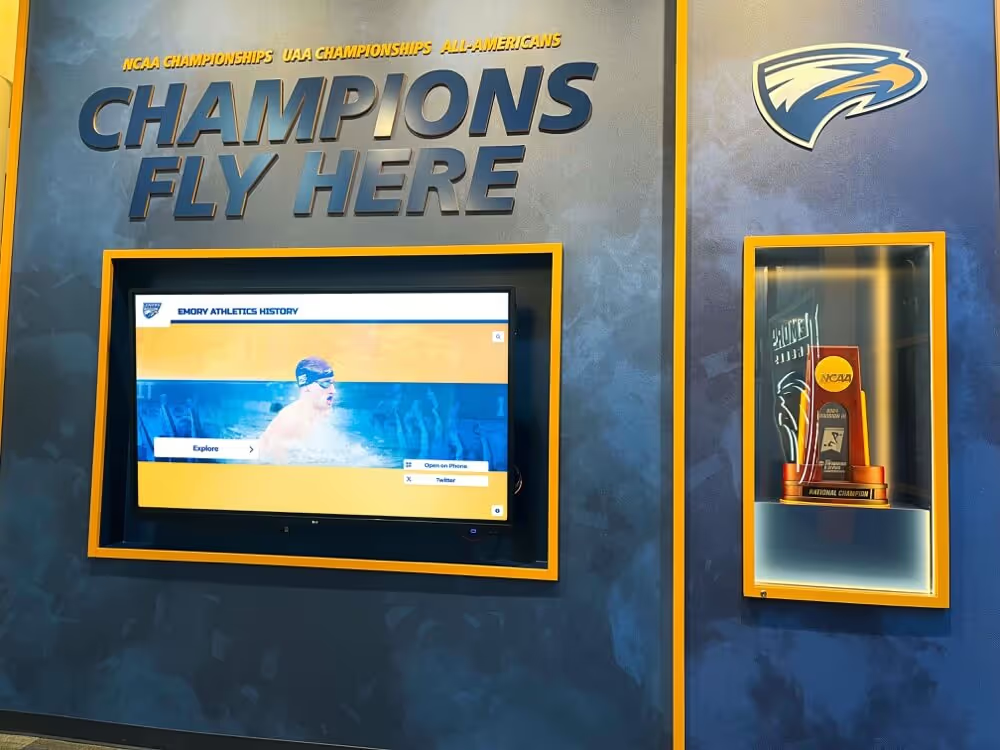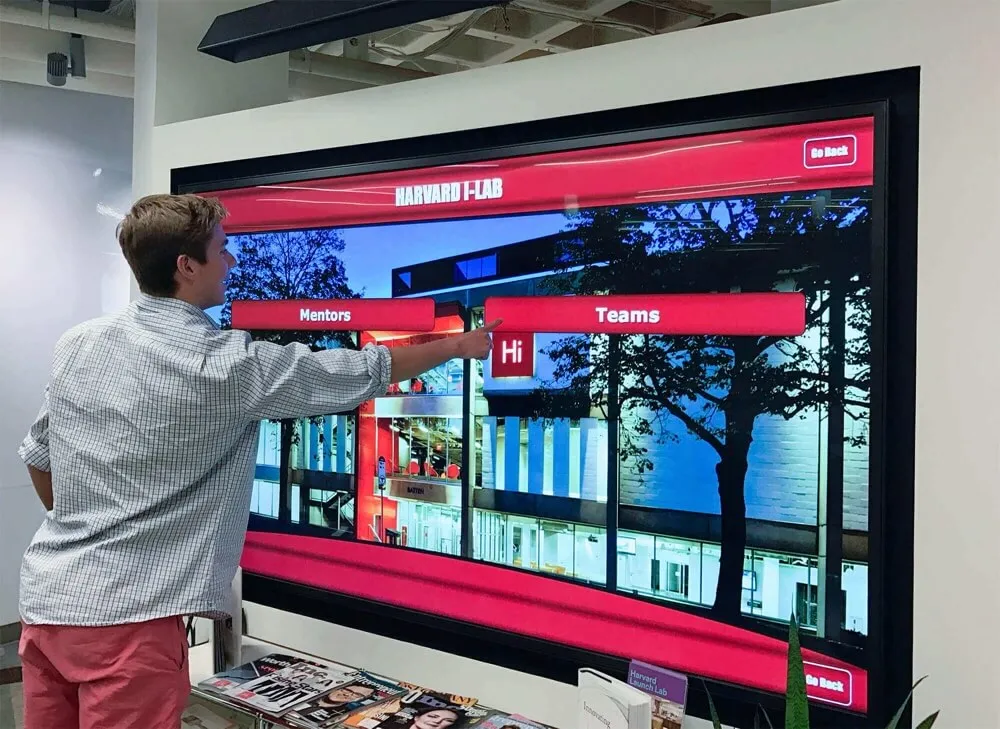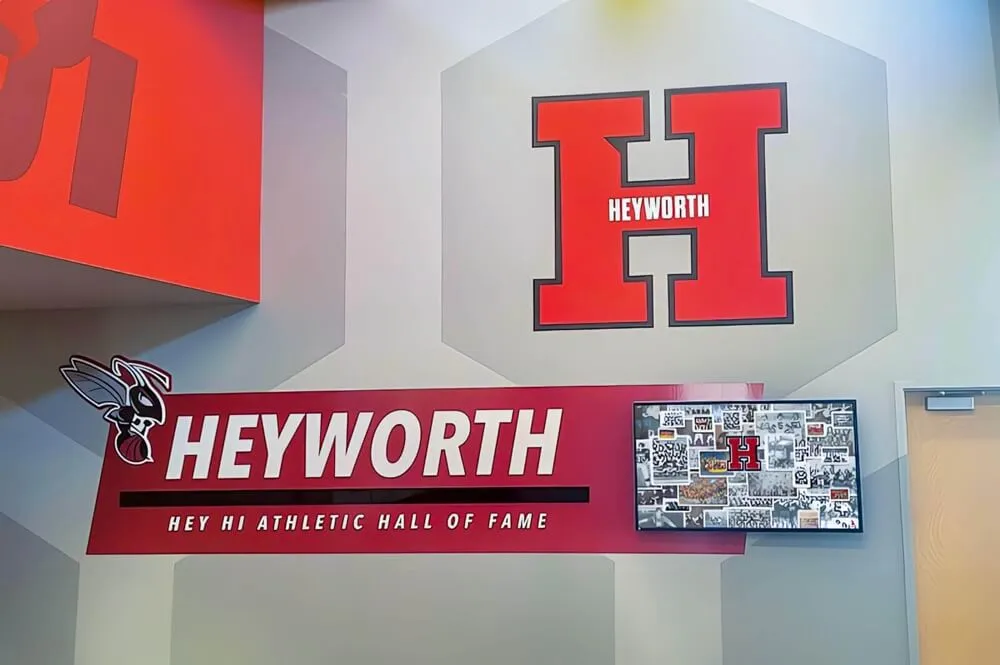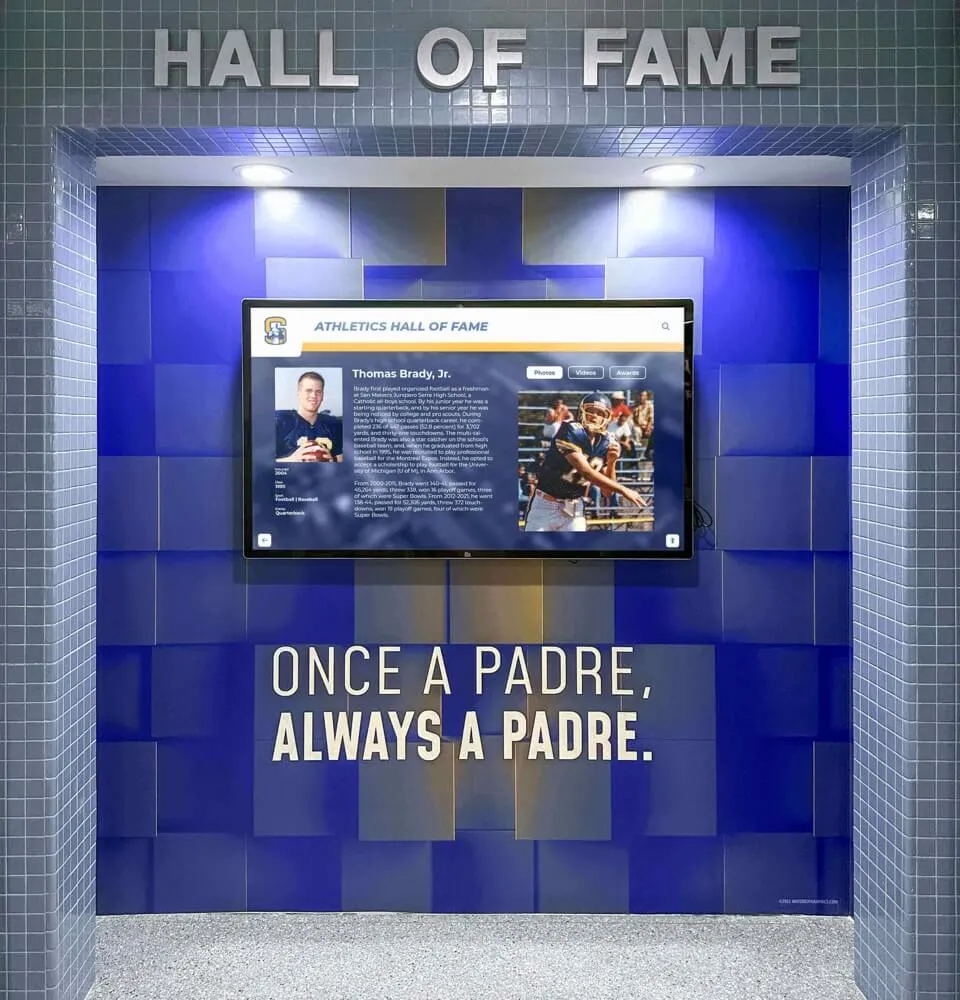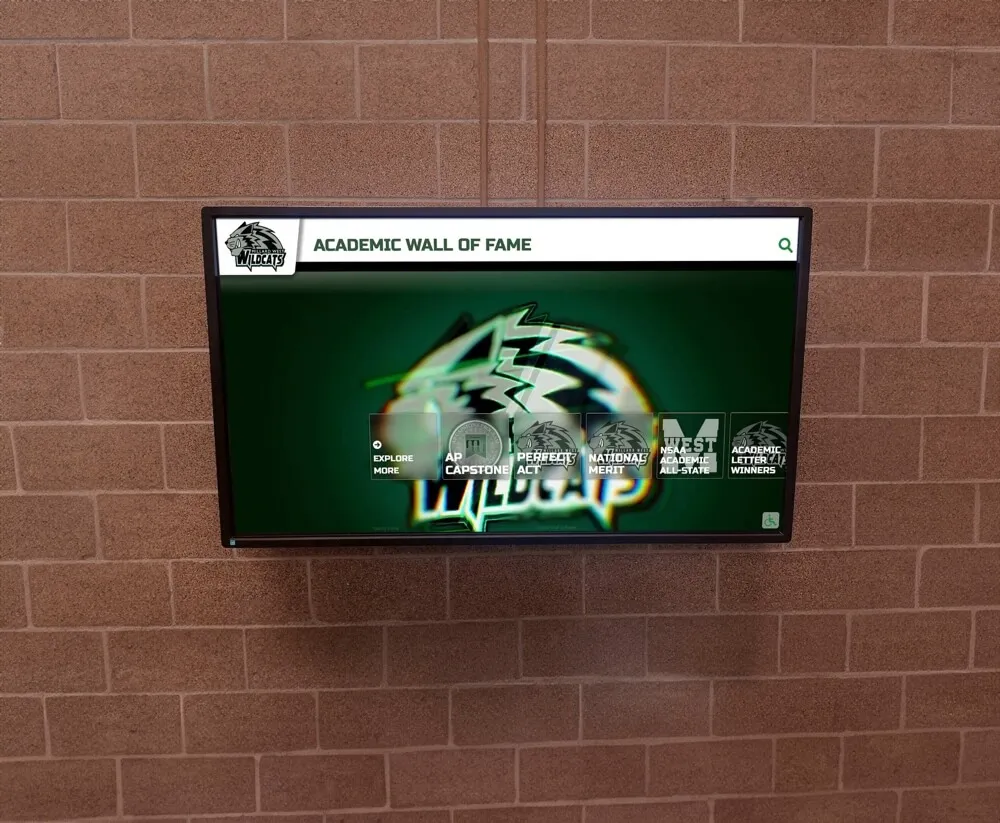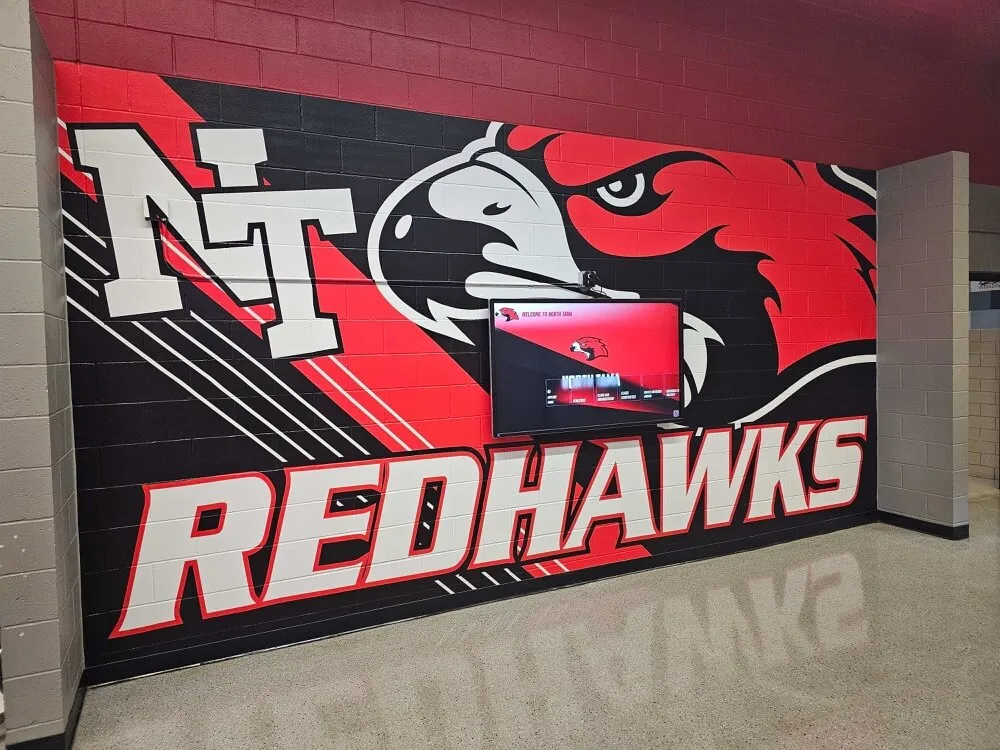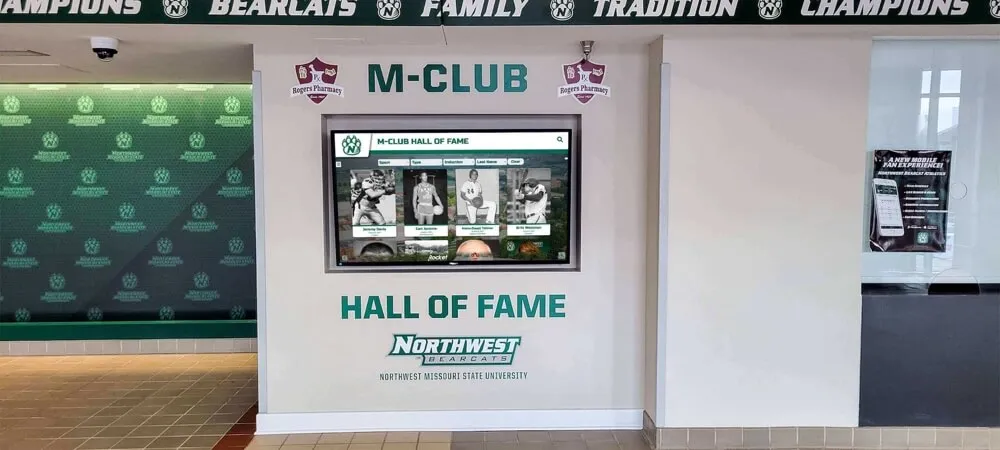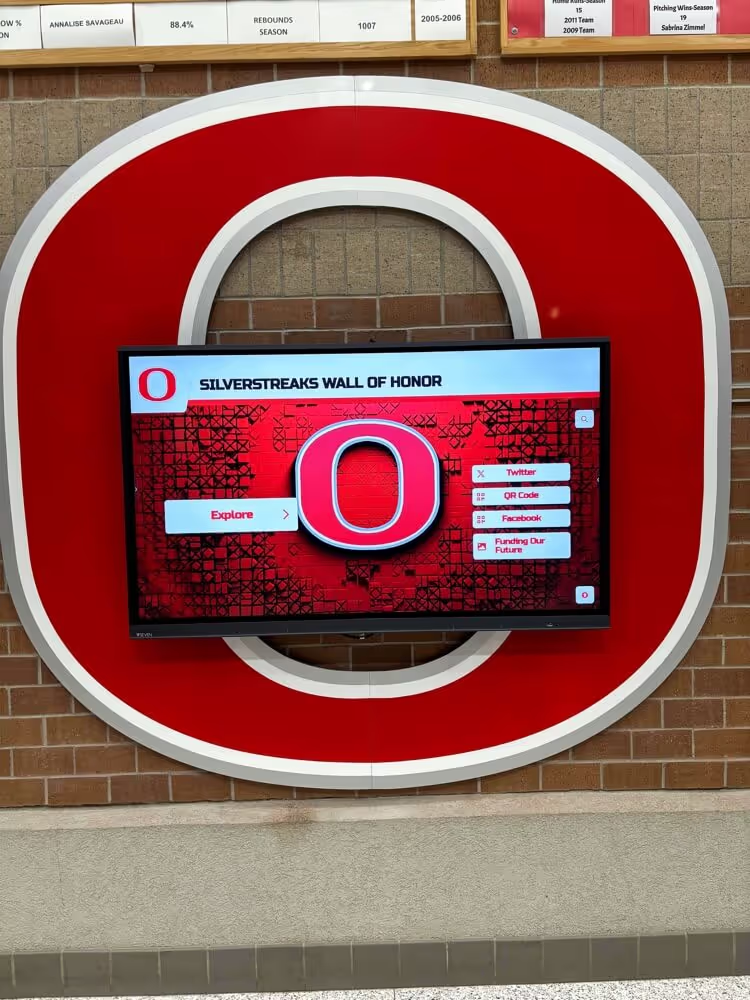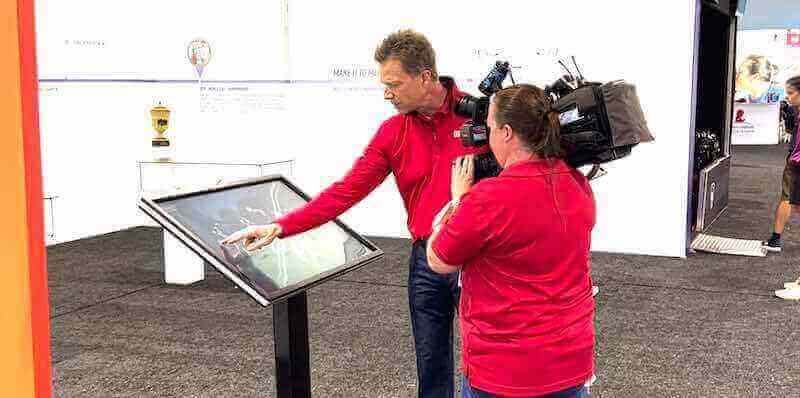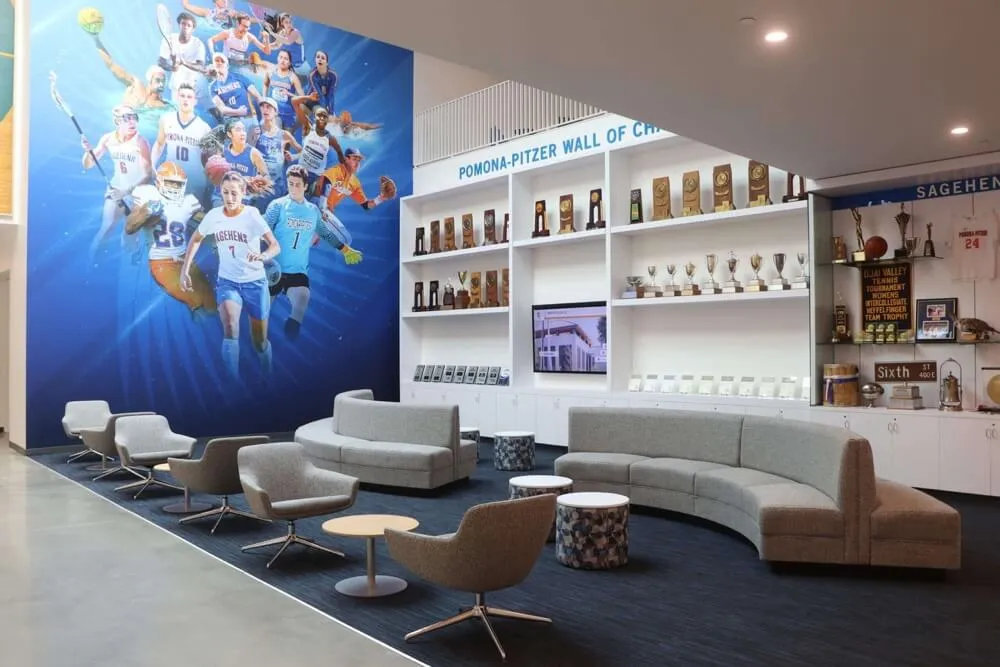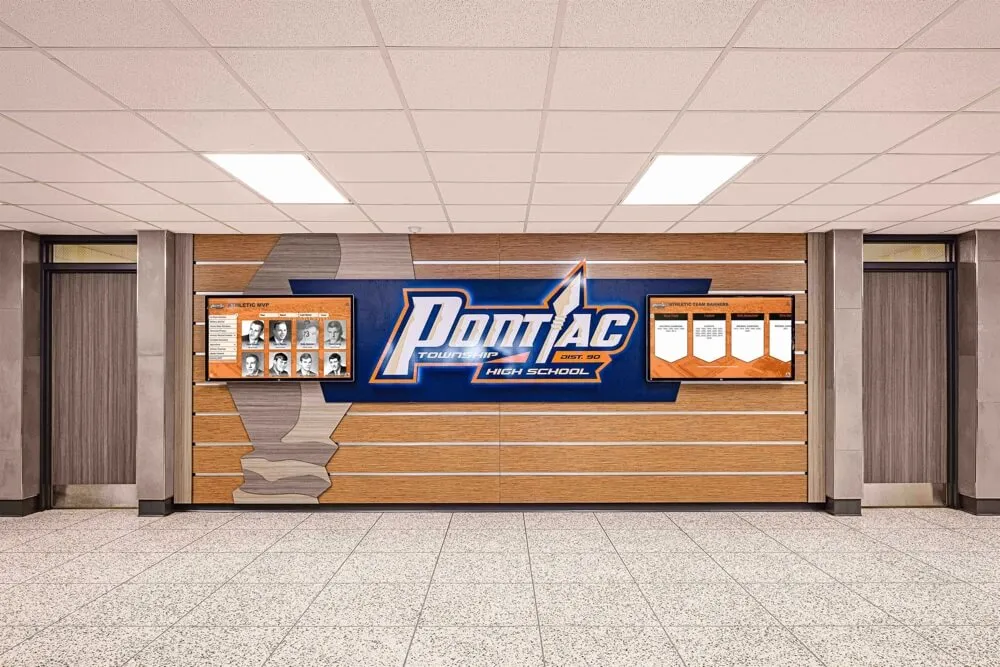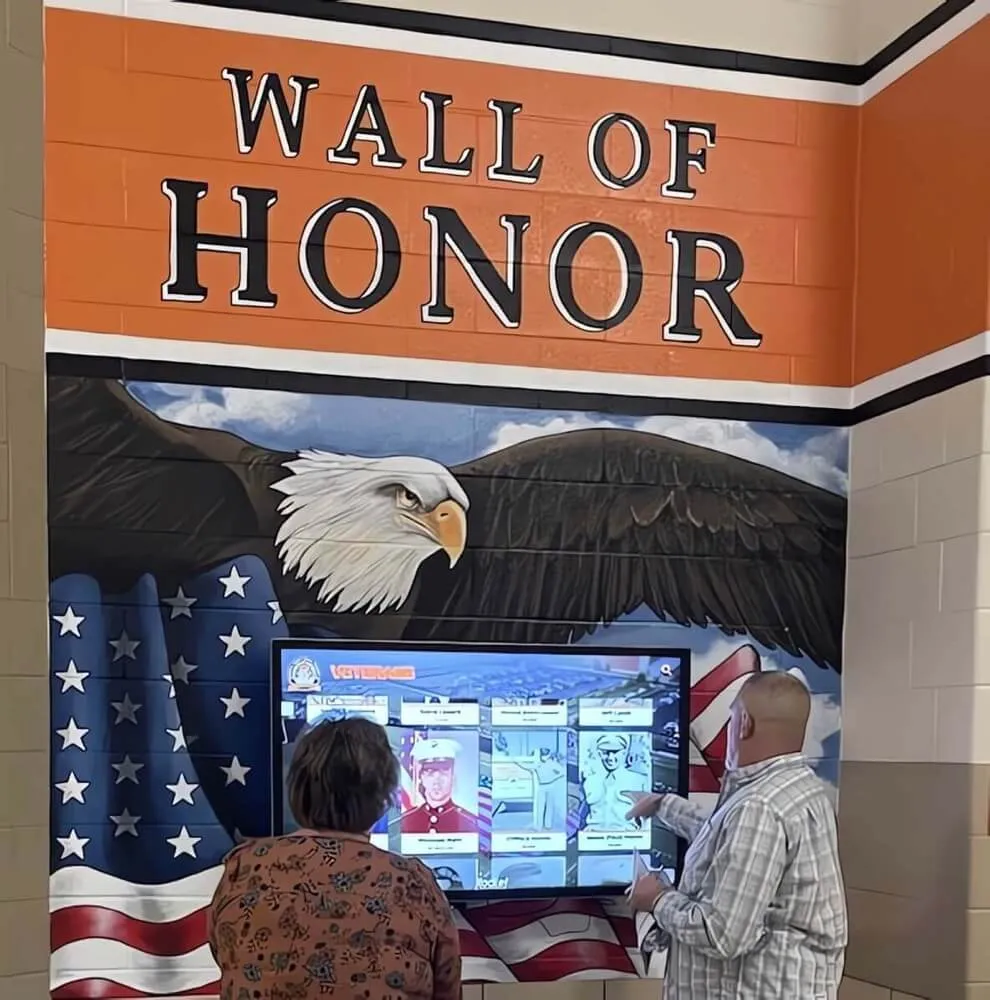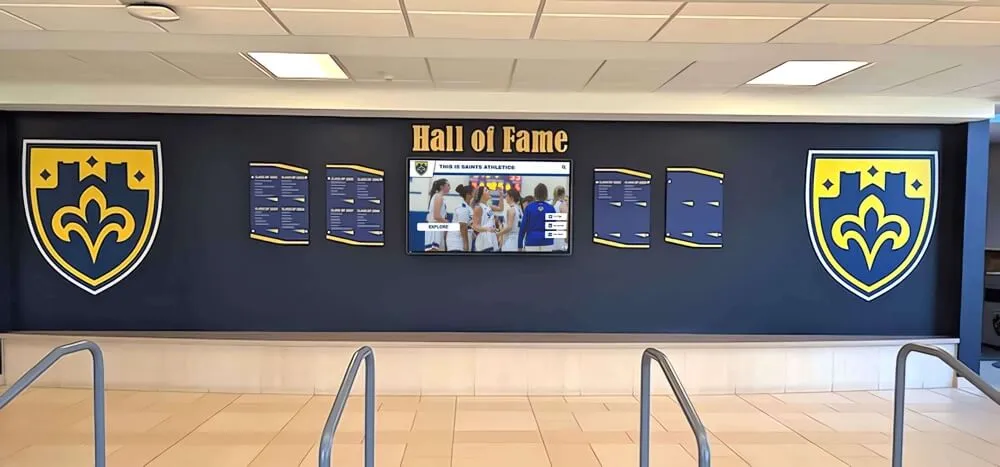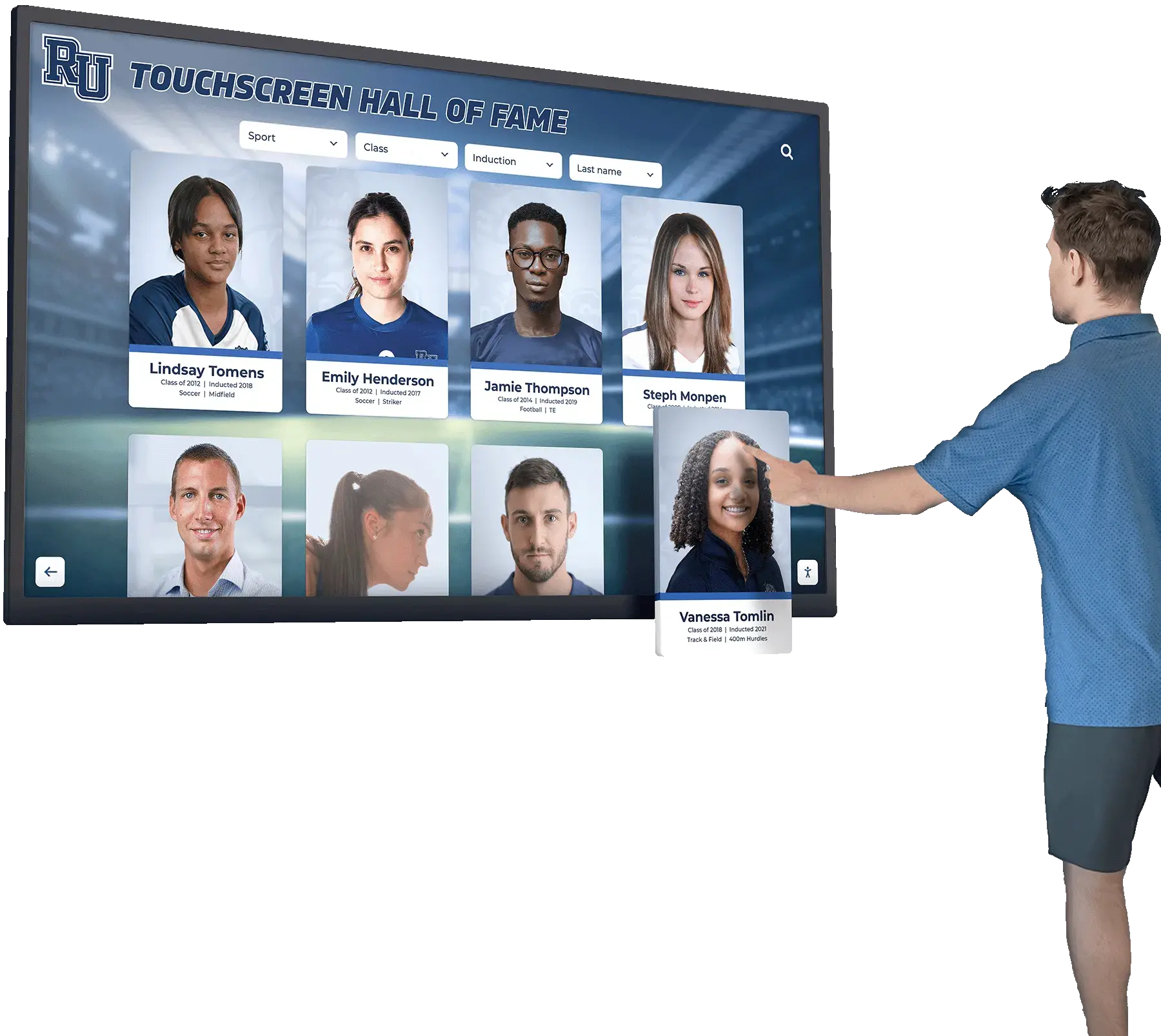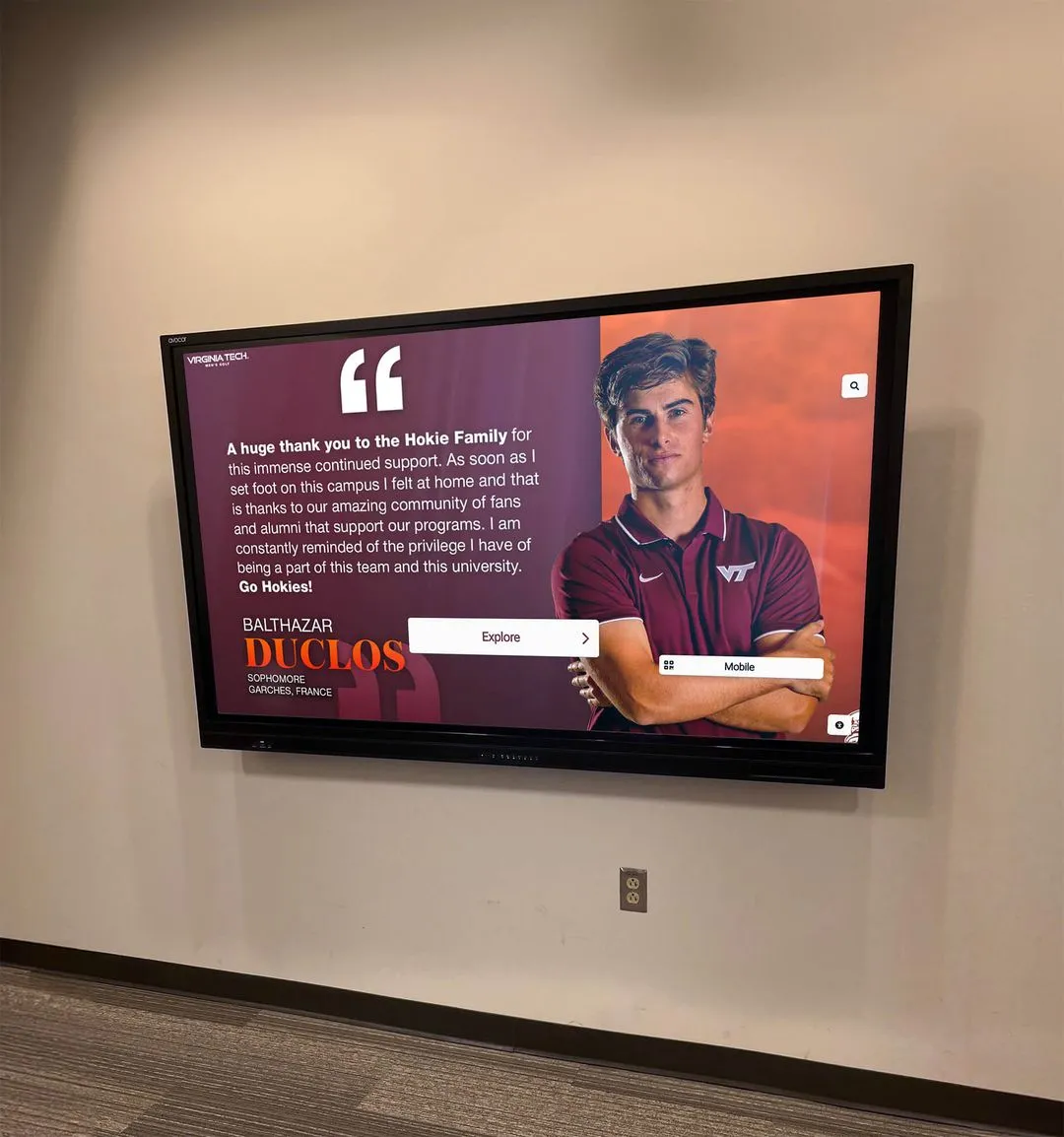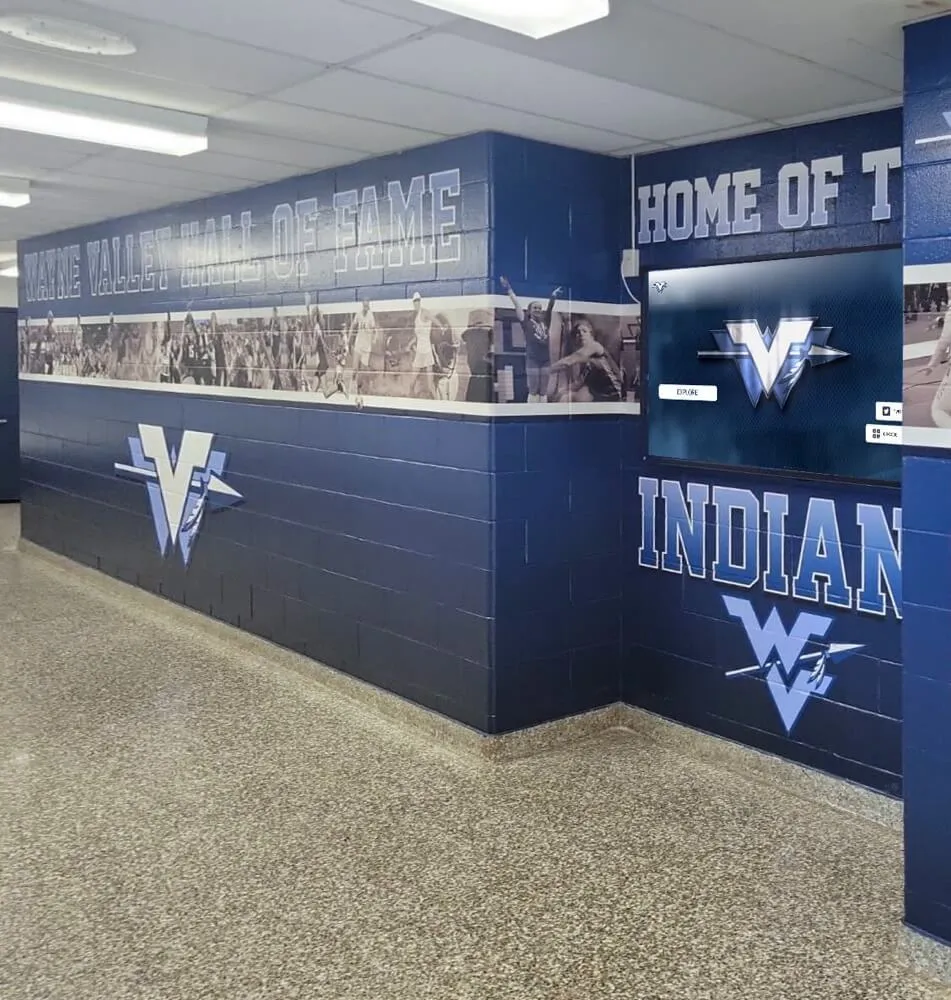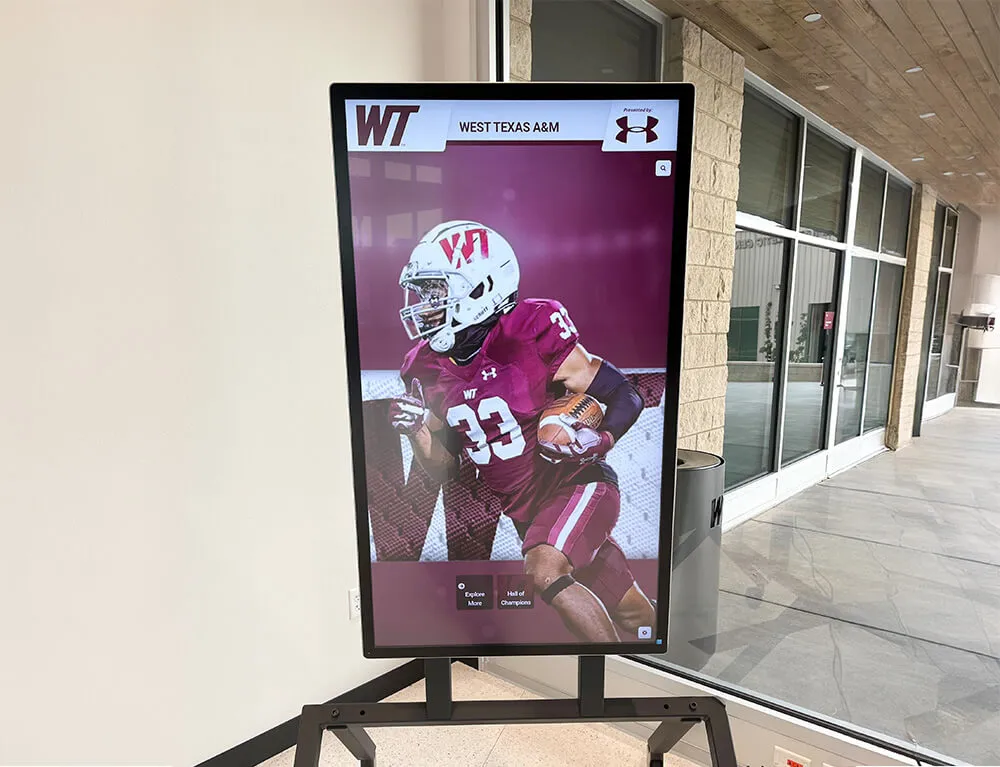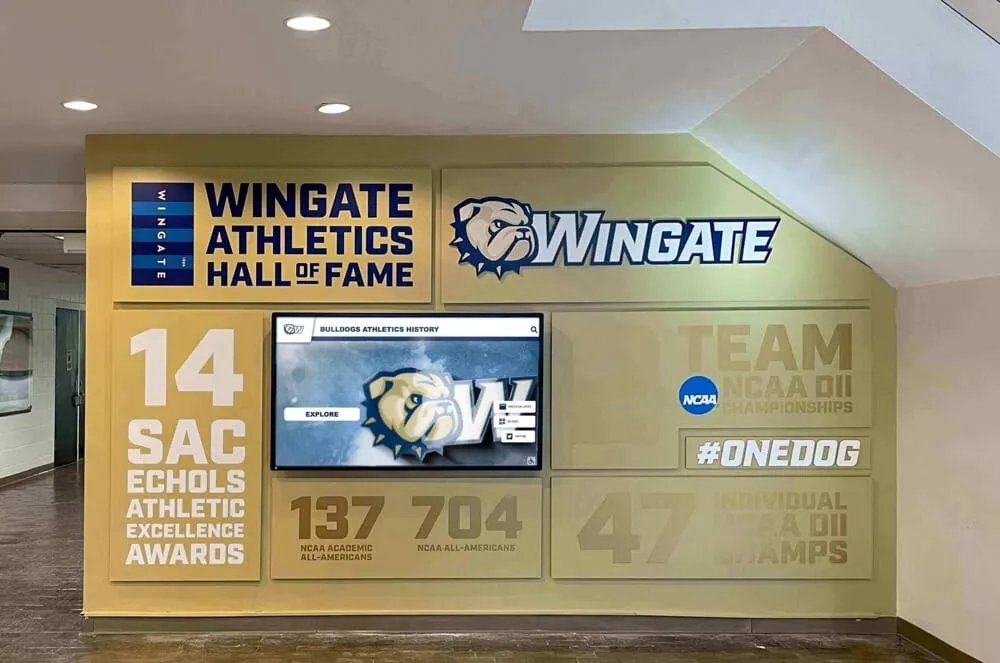Key Takeaways
Discover how to tell your complete institutional story through a digital hall of fame. Learn storytelling strategies, multimedia integration, and engagement techniques that honor every achievement and build lasting pride.
Why Telling Your Complete Story Matters
Before exploring how digital halls of fame enable comprehensive storytelling, understanding why complete institutional narratives matter helps justify the investment and effort required for effective implementation.
Building Authentic Institutional Identity
Your institutional story defines who you are. Every championship victory, distinguished graduate, dedicated educator, facility milestone, and program innovation contributes to a collective narrative that separates your organization from every other. When you tell this story comprehensively—honoring diverse achievements across all domains and eras—you create authentic identity that resonates with every stakeholder.
Students who understand their institution’s complete history develop deeper pride and stronger sense of belonging. They see themselves as temporary stewards of ongoing legacies rather than isolated individuals temporarily attending classes or competing in sports. This connection to something larger than themselves strengthens engagement, improves retention, and builds the authentic pride that transforms institutional culture.
Inspiring Current Participants Through Historical Examples
Abstract concepts like “excellence” and “tradition” become concrete and attainable when illustrated through real examples from your institution’s history. A championship team from 1985, a distinguished alumnus who became a Rhodes Scholar, or an innovative program that transformed educational approaches—these aren’t distant legends, they’re people who walked your same halls and faced similar challenges.
When current students, athletes, and community members encounter comprehensive documentation of past achievements through accessible digital recognition displays, excellence transforms from abstract aspiration to realistic possibility. They think: “If someone from my school accomplished that, perhaps I can too.” This psychological shift profoundly impacts motivation and achievement.
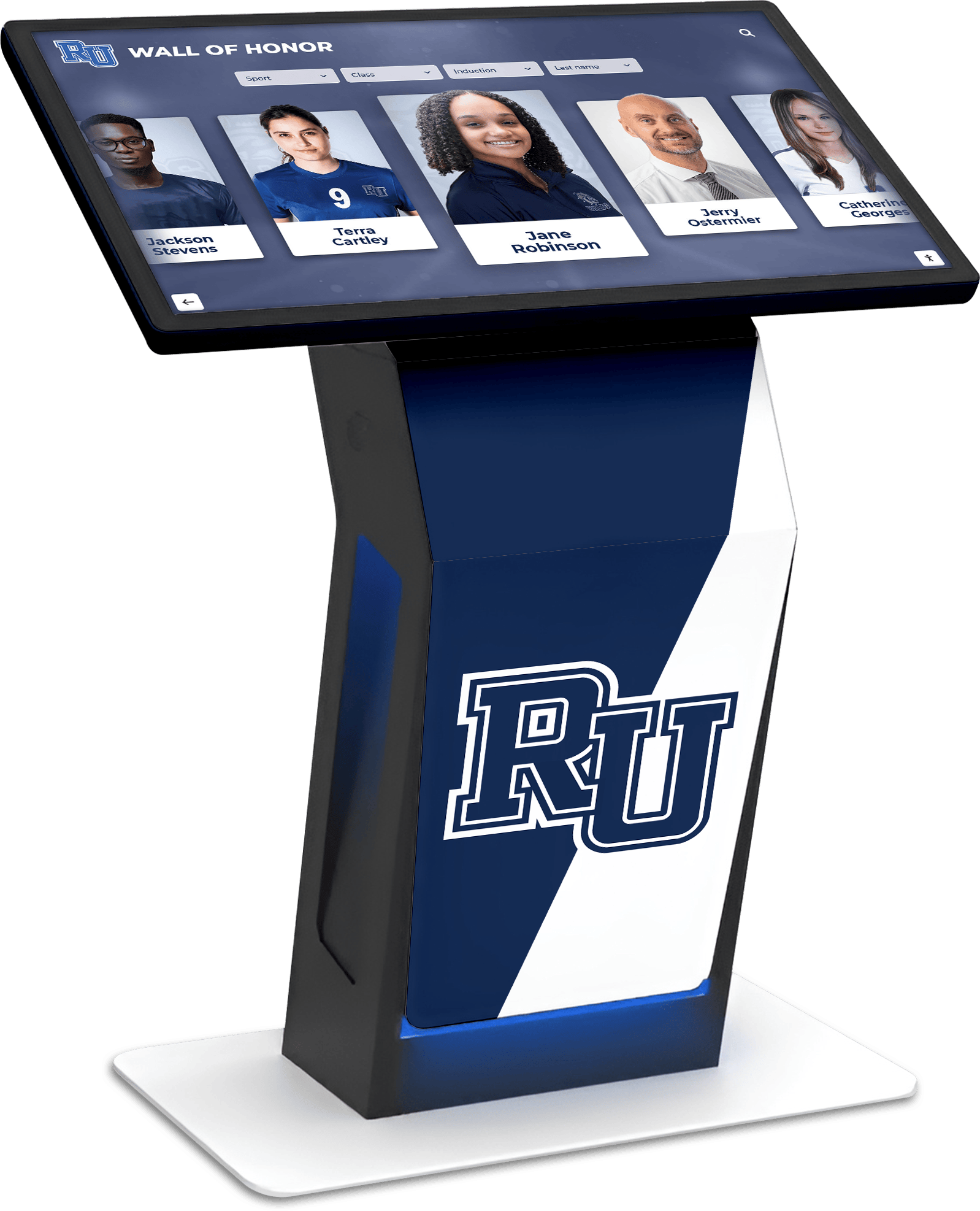
Strengthening Alumni Engagement and Philanthropic Support
Alumni represent invaluable resources—potential mentors, career connections, financial supporters, and living embodiments of your institution’s value. Yet many graduates gradually drift away as connections fade and institutional bonds weaken over time.
Comprehensive storytelling through digital halls of fame creates powerful touchpoints that keep alumni engaged. When graduates see their achievements or classmates recognized publicly as integral parts of ongoing institutional narratives, they feel valued and connected. This recognition transforms alumni from former students into lifelong community members invested in institutional success—directly impacting giving rates, volunteer participation, and sustained engagement.
Preserving Institutional Memory for Future Generations
Institutional memory naturally erodes over time. Long-serving staff members retire taking decades of knowledge with them. Alumni pass away leaving stories untold. Physical artifacts deteriorate. Without intentional preservation through systematic documentation, precious heritage disappears forever.
Digital halls of fame ensure that remarkable achievements, defining moments, and inspiring stories remain accessible to future generations. Decades from now, community members should still explore institutional evolution, understand founding values, and connect with legacies they’re inheriting and extending. Comprehensive storytelling through preserving school history creates continuity that survives leadership transitions and cultural changes.
The Limitations of Traditional Recognition Methods
Traditional approaches to telling institutional stories—physical trophy cases, plaque walls, and scattered recognition programs—face significant constraints that prevent comprehensive storytelling regardless of quality or investment.
Space Constraints Limit Recognition Capacity
Physical displays accommodate only finite achievements. A trophy case holds perhaps 50-100 awards. A hallway plaque wall might recognize 200-300 individuals. As years pass and achievements accumulate, difficult choices emerge: remove older recognition to accommodate new accomplishments, expand physical displays at considerable expense, or simply stop recognizing when space fills.
This zero-sum limitation forces prioritization of recent over historical, athletic over academic, or high-profile over equally deserving but less visible achievements. These forced choices create incomplete narratives that fail to tell complete institutional stories.
Static Displays Lack Depth and Context
Traditional plaques provide basic information—names, years, brief descriptions—but can’t tell rich stories that bring history to life. Visitors walk past static displays without genuine engagement, unable to explore connections, discover related content, or experience the multimedia storytelling that resonates with contemporary audiences.
A name on a plaque communicates “this person achieved something noteworthy.” But it doesn’t explain who they were, what challenges they overcame, how they impacted others, or why their achievement mattered. Without context and depth, recognition becomes acknowledgment without inspiration.
Disconnected Recognition Creates Fragmented Narratives
Many institutions maintain separate recognition systems for different domains—athletic displays in gymnasiums, academic honors near administrative offices, alumni recognition in libraries, and donor walls in development areas. This fragmentation prevents comprehensive understanding of institutional stories and makes it difficult for community members to explore achievements holistically.
Students interested in both academics and athletics must visit multiple locations. Alumni trying to understand their graduation year’s collective impact can’t access centralized information. Disconnected systems undermine the coherent narratives that effective storytelling requires.
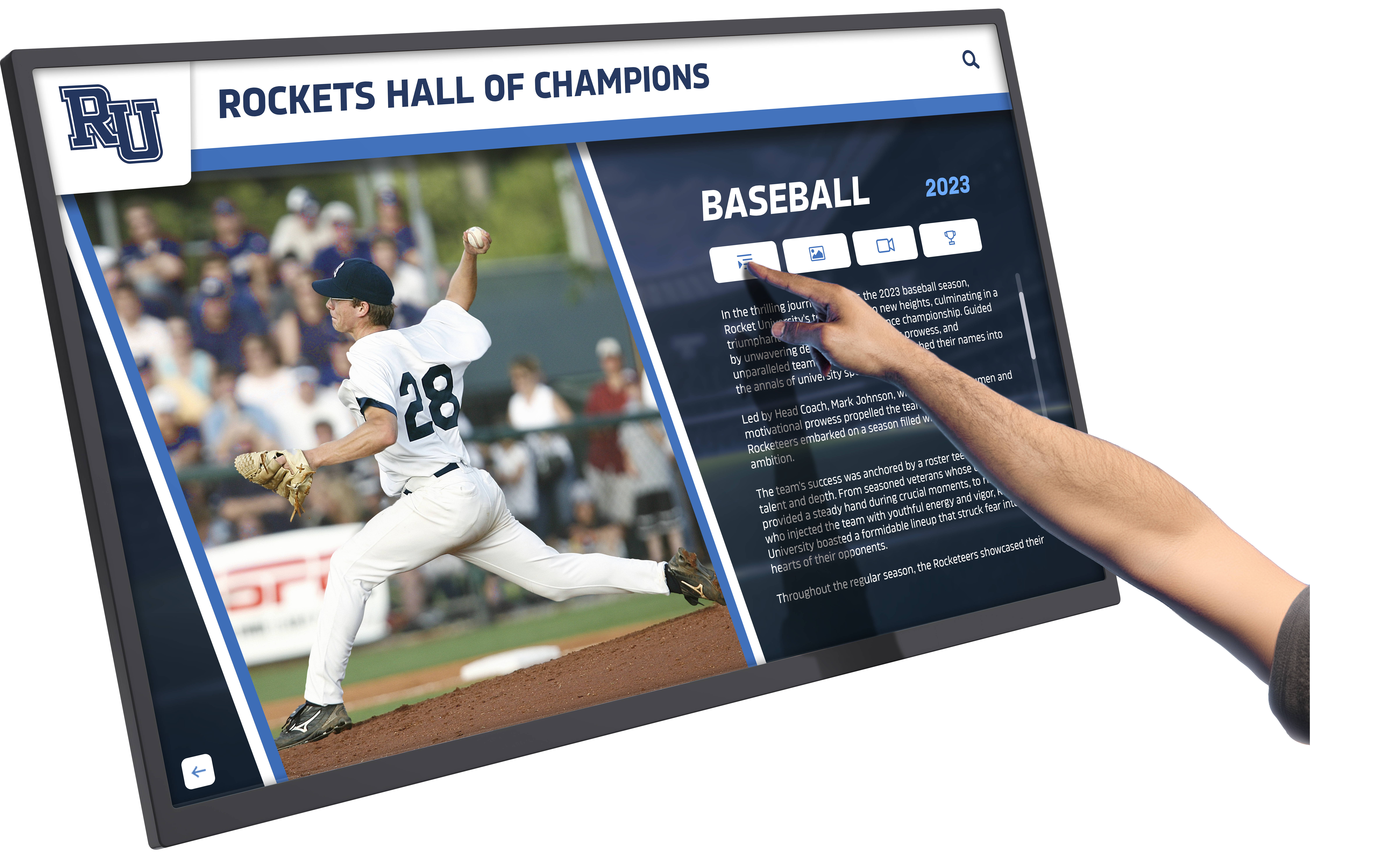
Accessibility Limitations Restrict Your Audience
Physical displays exist only in specific locations, accessible only to those who can physically visit. Alumni living across the country or around the world, prospective families researching remotely, and community members with mobility limitations can’t engage with recognition that exists solely in hallways and lobbies.
This geographic constraint artificially limits your storytelling audience to a small fraction of stakeholders who might benefit from connecting with institutional history. Your story deserves broader reach than physical location alone provides.
How Digital Halls of Fame Enable Complete Storytelling
Modern digital recognition platforms address traditional limitations while introducing powerful capabilities that transform how institutions tell their complete stories to diverse audiences.
Unlimited Capacity for Comprehensive Recognition
Digital systems eliminate physical space constraints. Whether recognizing 100 distinguished individuals or 10,000, 50 championship teams or 500, the display footprint remains constant while content capacity expands infinitely. This unlimited capacity enables institutions to honor comprehensive history without forced choices about inclusion or exclusion.
Every championship team, every valedictorian, every distinguished alumnus, every record-breaking athlete, every dedicated educator, every program milestone—all receive appropriate recognition within systems designed to scale seamlessly. Your complete story can finally be told without artificial limitations imposed by physical constraints.
Rich Multimedia Storytelling Bringing History to Life
Digital platforms transcend text-based recognition by incorporating photos, videos, audio recordings, scanned documents, and interactive timelines that bring history to life with emotional resonance impossible through static plaques.
Video interviews with distinguished alumni sharing career journeys and advice create powerful cross-generational connections. Game footage from championship seasons preserves exciting moments while demonstrating excellence. Photo galleries showing facility evolution illustrate institutional growth. Audio recordings of historic performances preserve cultural artifacts that would otherwise be lost.
This multimedia richness transforms passive viewing into engaging experiences that hold attention, create emotional connections, and make history feel relevant and immediate rather than distant and abstract.
Powerful Search and Discovery Features
Interactive digital systems allow visitors to explore institutional history through intuitive search and filter capabilities. Community members can quickly find alumni who pursued careers that interest them, search for relatives who attended decades earlier, filter championship teams by sport or year, or explore achievements from specific graduation classes.
This personalized discovery transforms recognition displays from static monuments into research tools and exploration platforms. Visitors engage actively rather than passively, creating meaningful personal connections to content that resonates with their specific interests and backgrounds.

Centralized Multi-Domain Recognition
Digital platforms enable comprehensive recognition across all achievement domains—academics, athletics, arts, community service, distinguished alumni, and more—within unified systems. Visitors explore institutional history holistically rather than encountering fragmented recognition in disconnected physical locations.
This centralization creates coherent narratives that honor diverse excellence while maintaining clear institutional identity. When school history and legacy recognition spans all domains within integrated platforms, your complete story emerges rather than fragments scattered across campus.
Global Accessibility Through Web-Based Access
Web-based components of digital recognition systems provide universal access regardless of physical location. Alumni anywhere in the world explore institutional heritage, find classmates, and stay connected. Prospective families research institutional culture before visiting. Community members engage with history without needing to physically enter buildings.
This accessibility exponentially expands who can engage with your story while enabling social sharing that extends institutional visibility far beyond traditional geographic limitations. Your story reaches the global audience it deserves.
Building Your Complete Story: Strategic Content Development
Effective digital halls of fame require thoughtful content development that honors diverse achievements while creating engaging narratives that resonate with varied audiences.
Identifying the Full Scope of Your Story
Begin by comprehensively inventorying what makes your institution unique and what achievements warrant recognition across your complete history.
Athletic Excellence: Championship teams, individual records, all-conference honors, coaching legends, professional athletes, facility milestones, and memorable moments that define your competitive tradition.
Academic Achievement: Valedictorians, scholarship recipients, academic competition successes, distinguished faculty, innovative programs, research breakthroughs, and educational milestones demonstrating commitment to learning excellence.
Distinguished Alumni: Career accomplishments, community service, professional recognition, entrepreneurial success, public service, creative achievement, and contributions demonstrating how your education launched meaningful lives.
Arts and Cultural Achievements: Performance excellence, competition results, creative innovations, artistic recognition, and cultural contributions showcasing well-rounded institutional identity.
Institutional Milestones: Founding history, facility evolution, leadership transitions, program launches, accreditation achievements, and significant moments shaping organizational development.
Community Impact: Local partnerships, service projects, civic engagement, regional contributions, and community relationships demonstrating institutional commitment beyond campus boundaries.
This comprehensive inventory ensures your digital hall of fame tells your complete story rather than focusing narrowly on limited achievement categories.
Creating Compelling Biographical Narratives
Numbers and titles acknowledge achievement—but stories inspire. Effective biographical content in digital halls of fame goes beyond basic facts to create narratives that bring honorees to life.
Focus on Personal Journey: Don’t just state “John Smith, Class of 1985, became CEO of Technology Corporation.” Tell the story: “Growing up in a single-parent household, John Smith ‘85 worked night shifts at the campus library to fund his education. That determination carried him through thirty years in technology leadership, culminating in his role as CEO where he never forgot his roots—establishing scholarship programs ensuring others face similar obstacles with greater support.”
Highlight Character and Values: Achievement matters, but character resonates. When honoring individuals, emphasize the qualities that enabled their success—persistence through setbacks, commitment to helping others, innovative thinking, collaborative spirit, or principled leadership. These character dimensions create connections that pure achievement lists never accomplish.
Connect Past and Present: Draw explicit links between historical content and current institutional characteristics. When featuring a music program founder from 1952, note how that initial vision evolved into today’s comprehensive performing arts curriculum serving hundreds annually. These connections help viewers see themselves as part of continuing narratives.
Include Multiple Perspectives: Feature diverse voices providing varied viewpoints—alumni reflecting on experiences, coaches discussing philosophy, teachers sharing pedagogical insights, and community members describing institutional impact. Multiple perspectives create richer, more authentic understanding than single institutional voice provides.
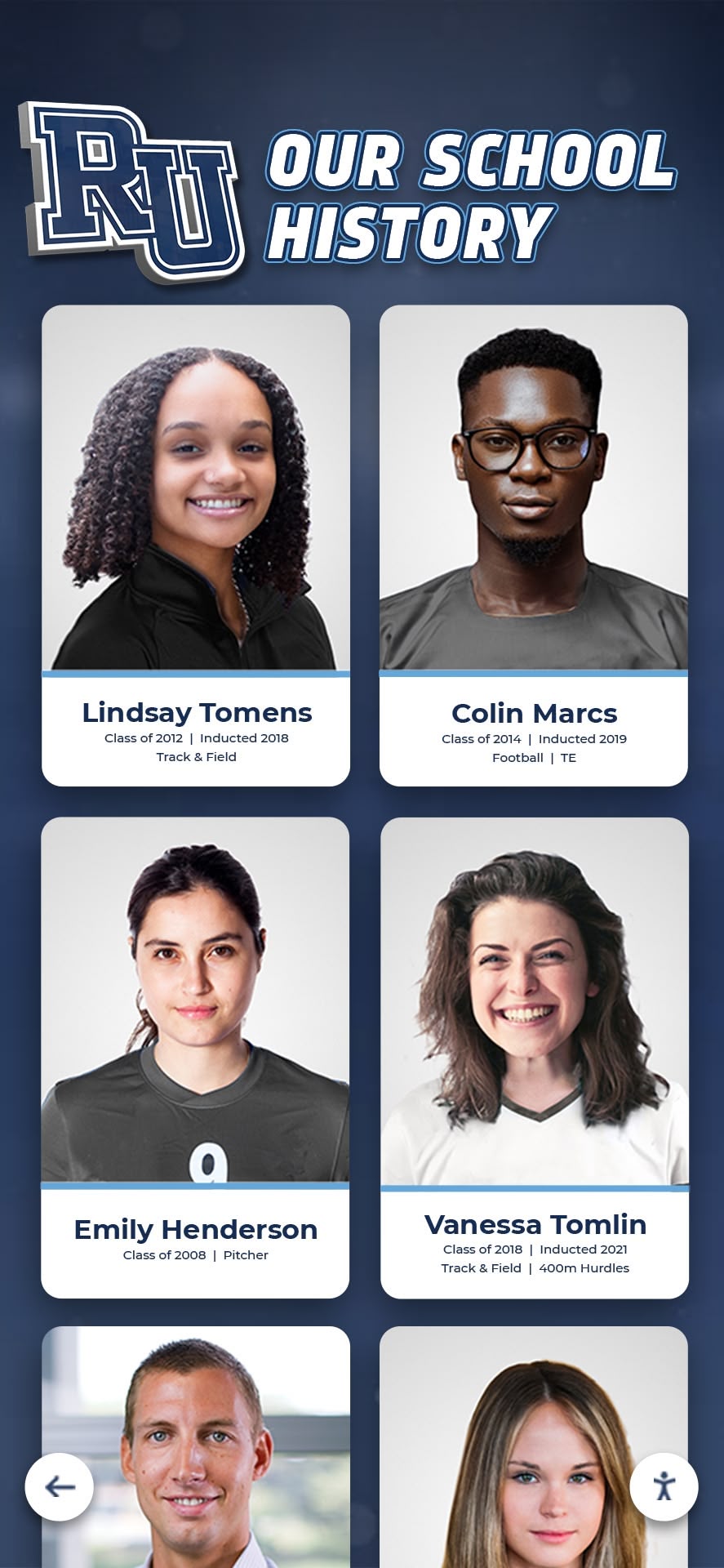
Integrating Multimedia Content for Richer Storytelling
Text alone can’t tell complete stories. Strategic multimedia integration creates emotional connections that pure written content never achieves.
Video Interviews: Record distinguished alumni discussing career journeys, sharing advice for current students, and reflecting on how institutional experiences shaped their paths. These video testimonials create powerful cross-generational connections while preserving living history before it’s lost.
Historic Game Footage: Digitize championship game recordings, memorable performances, and significant competitive moments. Watching footage of a 1980 state championship creates visceral excitement that written descriptions can’t match while preserving athletic heritage comprehensively.
Photographic Timelines: Compile photo collections showing facility evolution, fashion changes, demographic shifts, and visual documentation of institutional transformation across decades. These visual timelines help community members understand evolution while triggering powerful nostalgia among alumni.
Audio Recordings: Preserve oral histories, musical performances, significant speeches, and audio documentation that would otherwise be lost. Audio content creates intimate connections while documenting dimensions of institutional life that written records miss.
Document Digitization: Scan historic yearbooks, programs, newspapers, correspondence, and artifacts making them searchable and accessible. These primary sources enable deep exploration by historians, researchers, and community members interested in understanding heritage comprehensively.
The video embed shows how interactive digital displays enable rich multimedia storytelling:
Organizing Content for Intuitive Discovery
Even comprehensive content fails if visitors can’t find what interests them. Thoughtful organization enables both browsing and targeted discovery.
Chronological Navigation: Provide timeline views allowing visitors to explore history sequentially, decade by decade. Chronological organization helps community members understand evolution while enabling alumni to focus on their specific eras.
Category-Based Exploration: Enable filtering by achievement type—athletics, academics, arts, service, etc.—allowing visitors to focus on domains that interest them most. Category organization supports specialized research while respecting different audience interests.
Searchable Databases: Implement powerful search functionality across all content. Visitors should quickly find specific individuals, achievements, teams, or years through simple text search without endless scrolling or complex navigation.
Featured Content Rotation: Highlight particularly significant or engaging content through featured sections that rotate regularly. Featured content ensures diverse recognition receives visibility while maintaining fresh displays that encourage repeat visits.
Connection Mapping: Where possible, show relationships between different honorees—teammates who both achieved distinction, family members across generations, mentors and mentees, or collaborators on significant achievements. These connection maps reveal the relational fabric underlying individual accomplishment.
Engaging Your Diverse Audiences Through Targeted Storytelling
Different audiences engage with institutional stories for different reasons. Effective digital halls of fame provide pathways serving varied stakeholder needs and interests.
Current Students: Inspiration and Belonging
Students engage with institutional history primarily seeking inspiration and connection. They want to understand traditions they’re joining, discover role models who faced similar challenges, and see evidence that their achievements might someday earn similar recognition.
Provide Relatable Role Models: Feature diverse honorees representing various paths to success. Students need to see that excellence takes many forms—not just superstar athletes or perfect scholars, but also dedicated community servants, creative innovators, persistent problem-solvers, and collaborative leaders. Diverse examples help every student envision their potential path to distinction.
Connect Historical Achievements to Current Opportunities: When featuring championship teams, explain how current programs build on those traditions. When honoring distinguished alumni, note how current academic programs prepared them. These connections demonstrate that today’s students access the same foundations that enabled historical excellence.
Emphasize Character Over Credentials: Students benefit more from understanding how honorees overcame obstacles, demonstrated resilience, and embodied values than from reviewing impressive credentials. Character-focused storytelling provides actionable lessons that achievement-focused recognition doesn’t offer.
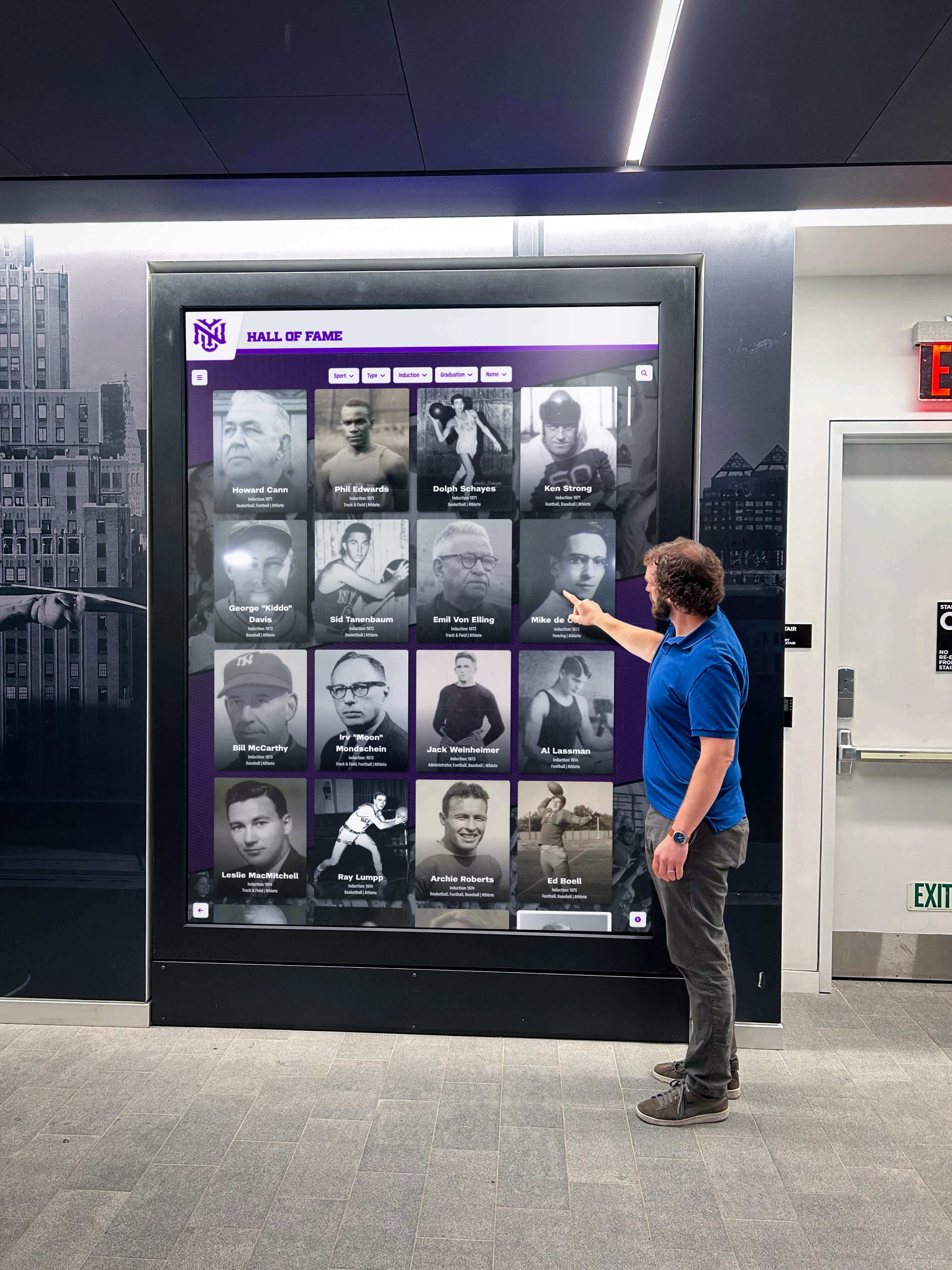
Alumni: Recognition and Nostalgia
Alumni engage institutional history seeking personal recognition, nostalgic connection, and validation that their experiences mattered and remain valued despite years or decades passing since graduation.
Visible Personal Recognition: Ensure every alumnus who achieved distinction receives appropriate acknowledgment. Alumni discovering their names, teams, or achievements featured experience validation strengthening emotional bonds with institutions. This visible recognition directly impacts engagement and philanthropic support.
Class-Based Exploration: Enable alumni to easily explore their graduation years and surrounding classes. Alumni want to see who they attended with, what their class collectively achieved, and how their era compared to others. Class-based navigation supports this natural curiosity.
“Then and Now” Comparisons: Show how facilities, programs, traditions, and institutional characteristics evolved since different alumni eras. These comparisons help alumni understand transformation while appreciating continuity connecting their experiences to present realities.
Social Sharing Capabilities: Make it easy for alumni to share their recognition on social media. When graduates proudly share hall of fame features with personal networks, your institutional story gains authenticity and reach that paid advertising can never achieve.
Prospective Families: Quality Indicators and Values Demonstration
Prospective students and families evaluate institutional character, educational quality, and value alignment when making enrollment decisions. Comprehensive digital halls of fame provide powerful evidence across all these dimensions.
Demonstrate Sustained Excellence: Comprehensive historical documentation proves institutional quality isn’t recent phenomenon but sustained tradition spanning generations. This historical excellence communicates stability, proven methodology, and reliable educational value.
Showcase Diverse Paths to Success: Feature distinguished alumni in varied careers and fields. Prospective families want confidence that your institution prepares students for diverse futures—not just specific professions or narrow paths. Broad success demonstrates comprehensive educational value.
Communicate Institutional Values: The achievements you honor reveal institutional values more authentically than mission statements ever could. If your hall of fame features equal recognition for academics, athletics, arts, and service, you demonstrate balanced values. If you honor character alongside achievement, you show that how students succeed matters as much as what they accomplish.
Community Members: Pride and Connection
Local communities take pride in institutional achievement and community connection. Digital halls of fame strengthen these bonds while building support extending beyond immediate stakeholders.
Highlight Community Contributions: Feature service projects, local partnerships, community impact initiatives, and ways your institution contributes beyond campus boundaries. This community-focused content demonstrates good citizenship while building local support.
Recognize Community Members: If community members serve on boards, support programs financially, or contribute meaningfully to institutional success, honor them appropriately. This recognition strengthens partnerships while demonstrating appreciation for essential support.
Document Local Impact: Tell stories showing how graduates contribute to local communities, how programs serve regional needs, and how institutional presence strengthens your area. This impact documentation builds community pride in local educational resources.
Measuring Success: How to Know Your Story Is Resonating
Effective digital halls of fame deliver measurable benefits across multiple dimensions. Tracking appropriate metrics demonstrates value while informing continuous improvement.
Engagement Metrics Revealing Interest and Usage
Digital platforms provide detailed analytics impossible with traditional recognition approaches, revealing exactly how community members engage with institutional storytelling.
Usage Volume and Patterns: Track unique visitors interacting with displays or websites, session duration indicating engagement depth, pages viewed per session showing exploration breadth, return visitor rates demonstrating sustained interest, and peak usage times informing content scheduling and promotional efforts.
Content Performance Analytics: Monitor most-viewed profiles revealing what resonates, search query patterns indicating what visitors seek, category popularity showing preferred content types, multimedia completion rates for videos and audio, and social sharing frequency measuring organic reach. These insights inform content priorities and development decisions.
Technical Performance: Ensure system uptime maintains consistent availability, monitor load times affecting user experience, track any error patterns requiring attention, and verify cross-platform consistency across physical displays, web, and mobile versions.
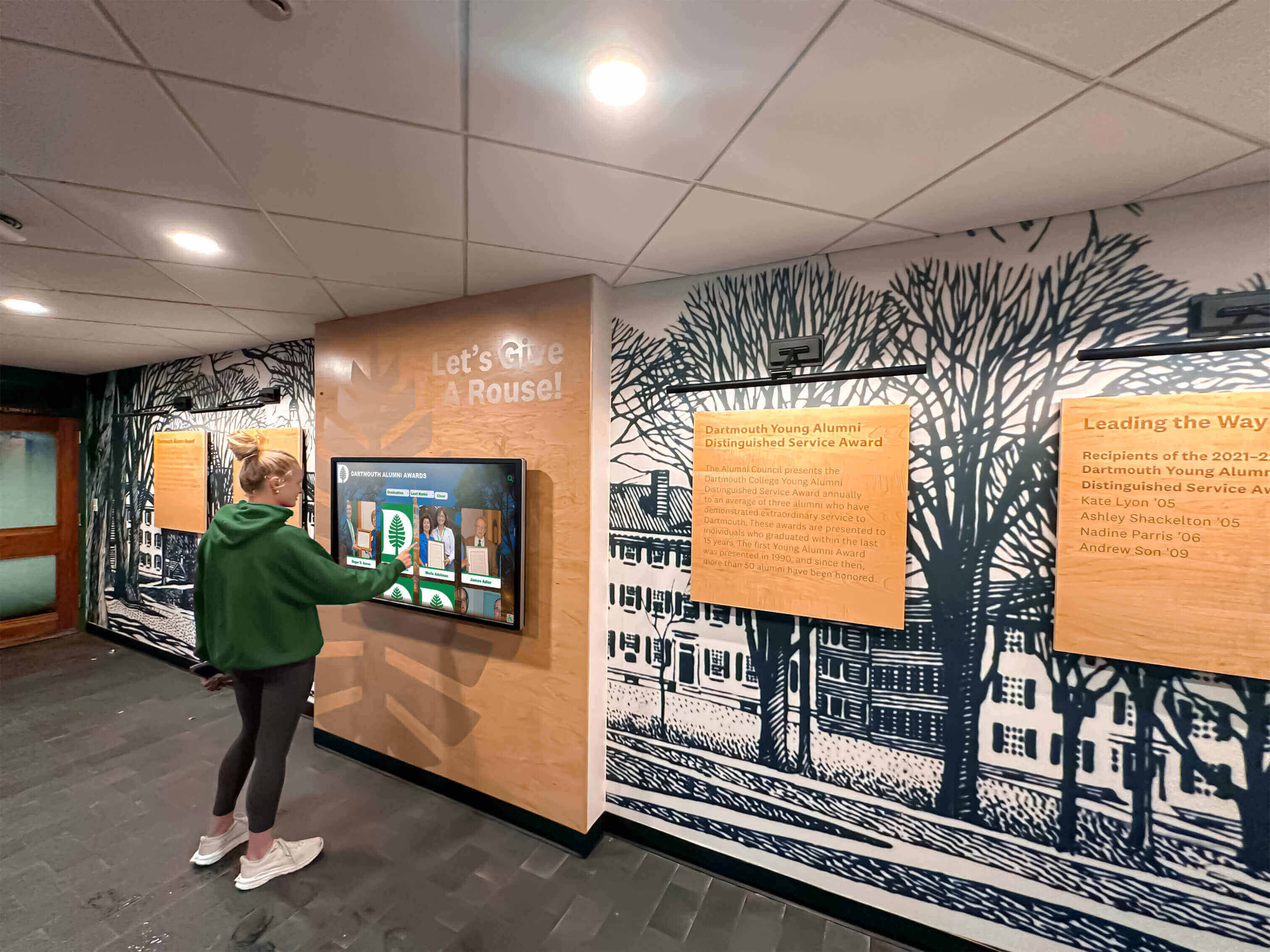
Alumni Engagement Indicators
Strengthened alumni connections represent primary goals for most institutional storytelling initiatives. Monitor metrics specifically indicating relationship strength influenced by recognition programs.
Participation Rates: Track alumni event attendance trends, reunion participation across class cohorts, volunteer program enrollment, mentorship initiative engagement, and career networking activity levels. Improvements following hall of fame launches suggest strengthened connections.
Philanthropic Metrics: Monitor giving participation rates across graduation years, average gift sizes, donor retention and upgrade patterns, and first-time donor acquisition. Alumni who feel recognized and connected demonstrate higher philanthropic engagement.
Communication Engagement: Assess email open and click-through rates, social media engagement levels, website traffic to alumni pages, and response rates to outreach initiatives. These communication metrics indicate relationship strength and content relevance.
Institutional Pride Indicators
While harder to quantify than direct engagement metrics, institutional pride influences critical outcomes including retention, recruitment, community support, and cultural vitality.
Student Sentiment: Survey students about institutional pride, sense of belonging, and connection to history. Compare results before and after hall of fame implementation to assess impact on student experience and culture.
Recruitment Impact: Monitor prospective family feedback mentioning historical achievements or hall of fame impressions during campus visits. Track enrollment yield rates and assess whether institutional storytelling influences enrollment decisions positively.
Community Perception: Assess media coverage quantity and quality, community member feedback and testimonials, and regional reputation indicators. Comprehensive storytelling through digital halls of fame often strengthens broader community perception and support.
Cultural Observations: Note whether community members reference historical examples when discussing current achievements, whether traditions strengthen or weaken, and whether institutional memory improves. These qualitative observations indicate cultural impact beyond quantitative metrics.
Implementation Best Practices: Building Your Digital Hall of Fame
Successfully launching a digital hall of fame that tells your complete story requires systematic planning, appropriate resource allocation, and sustained commitment extending beyond initial implementation.
Start With Clear Strategic Objectives
Begin by defining what you want to accomplish through digital hall of fame implementation. Common objectives include:
- Strengthening alumni engagement and philanthropic support
- Building student pride and sense of institutional connection
- Preserving institutional memory before it’s lost
- Improving recruitment through heritage demonstration
- Unifying fragmented recognition into coherent narrative
- Making achievements accessible to global audience
- Creating sustainable recognition system without space constraints
Clear objectives guide decision-making about content priorities, platform features, budget allocation, and success metrics. Without defined goals, projects risk becoming unfocused collections of historical content without strategic purpose.
Conduct Comprehensive Content Inventory
Document what historical materials currently exist, including physical trophies and awards, historical photographs and artifacts, yearbook collections, digital assets accumulated recently, documented achievements in various formats, and institutional knowledge held by long-serving staff.
Simultaneously identify gaps—missing records, underrepresented achievement categories, time periods with limited documentation, and demographic groups inadequately recognized. Comprehensive inventory informs realistic planning about initial scope versus long-term vision.
Select Appropriate Technology Platform
Evaluate digital recognition platforms based on your specific needs, technical capacity, and budget. Key considerations include:
Intuitive Content Management: Can non-technical staff easily add and update content without requiring ongoing technical support?
Multimedia Support: Does the platform accommodate photos, videos, audio, and documents that enable rich storytelling?
Search and Discovery: Can visitors easily find specific content through powerful search functionality and intuitive navigation?
Multi-Platform Deployment: Does the system support physical touchscreen displays, web access, and mobile viewing?
Scalability: Can the platform grow with your needs without requiring complete replacement as content volume expands?
Analytics and Reporting: Does the system provide usage data revealing how community members engage with content?
Ongoing Support: Does the provider offer reliable technical support, training resources, and regular feature updates?
Solutions like Rocket Alumni Solutions provide comprehensive platforms specifically designed for educational and institutional recognition, combining powerful functionality with intuitive management that makes sophisticated systems accessible even without extensive technical resources.
Prioritize Initial Content Development
Don’t attempt comprehensive historical documentation immediately. Strategic phasing builds momentum while demonstrating value that justifies continued investment.
Phase 1 - High-Impact Recent Content: Begin with recent achievements and currently living, accessible honorees. This recent content generates immediate engagement from active stakeholders while being relatively easy to develop with available sources.
Phase 2 - Significant Historical Highlights: Expand to particularly significant historical achievements—championship teams, distinguished alumni, program milestones, and defining moments that shaped institutional character.
Phase 3 - Comprehensive Historical Coverage: Systematically document remaining historical periods, filling gaps and ensuring complete coverage across all eras and achievement categories.
This phased approach delivers visible value quickly while building toward comprehensive storytelling over manageable timeframes.
Plan Sustainable Operations
Digital halls of fame require ongoing content updates, system maintenance, and community engagement extending far beyond initial launch. Plan for sustainability from the beginning.
Assign Clear Responsibility: Designate specific staff for content management, system administration, community outreach, and program oversight. Clear responsibility prevents programs from languishing when attention shifts to other priorities.
Allocate Adequate Budget: Ensure recurring funding for platform subscriptions or hosting, content development projects, hardware refresh cycles, promotional activities, and unexpected needs. Underfunded programs struggle regardless of initial enthusiasm.
Establish Update Processes: Create systematic workflows for adding new achievements regularly, reviewing and enhancing existing content, responding to community submissions, and maintaining technical systems. Regular updates keep content fresh while demonstrating ongoing commitment.
Maintain Visibility: Digital halls of fame require consistent promotion to remain visible in busy institutional environments. Integrate recognition into regular communications, event programming, campus tours, and community outreach maintaining awareness that justifies investment.
Conclusion: Your Complete Story Deserves to Be Told
Every institution possesses a unique story worth telling comprehensively and celebrating proudly—a rich narrative woven from countless individual achievements, defining moments, enduring traditions, and extraordinary people who shaped its character across generations. Yet too often, this remarkable story remains fragmented across disconnected recognition programs, hidden in storage, or gradually fading from collective memory simply because no adequate system exists to preserve and share it effectively.
Digital halls of fame transform this challenge into opportunity, creating comprehensive platforms that tell your entire story with the richness, accessibility, and engagement it deserves. By eliminating physical space constraints, enabling multimedia storytelling, providing powerful search capabilities, and ensuring global access, modern recognition systems help institutions honor complete heritage while inspiring future excellence.
The difference between institutions where history remains scattered and inaccessible versus organizations where heritage thrives as living connection profoundly impacts culture, engagement, and community strength. When you invest in telling your complete story through thoughtful digital halls of fame implementation, you honor every achievement regardless of when it occurred, strengthen connections across generations, inspire current excellence through historical examples, and ensure your remarkable narrative survives for future generations to discover and extend.
Your story deserves to be told completely, preserved permanently, and shared broadly. Digital halls of fame make comprehensive institutional storytelling not just possible but practical, affordable, and powerfully effective in building the authentic pride that strengthens entire communities.
Ready to tell your complete story? Modern digital recognition solutions provide the platform, tools, and support that enable institutions of all sizes to create halls of fame honoring their unique legacies while inspiring their communities. Discover how your story can finally be told with the comprehensiveness and engagement it deserves.
Frequently Asked Questions
How much content do we need before launching a digital hall of fame?
You don’t need comprehensive content before launching. Many successful implementations begin with 50-100 profiles documenting recent achievements and significant historical highlights, then expand systematically over time. Starting with manageable initial scope demonstrates value that justifies continued investment while avoiding paralysis waiting for perfect completeness that never arrives. Phased content development builds momentum while distributing workload sustainably.
Can we integrate existing physical recognition with new digital displays?
Absolutely. The most effective approaches often combine preserved physical recognition with enhanced digital systems. Physical trophies, plaques, and traditional displays provide tangible connection while digital platforms add depth, context, multimedia content, and unlimited capacity that physical displays alone can’t provide. Integration creates complementary experiences honoring tradition while embracing modern capabilities.
What if our institution has limited historical records or documentation?
Missing documentation represents common challenge, not disqualifying obstacle. Begin with available materials while systematically addressing gaps through alumni outreach requesting contributions, newspaper archive research, oral history interviews, local historical society partnerships, and transparent acknowledgment that some periods are less documented. Imperfect historical coverage meaningfully exceeds no historical recognition at all.
How do we maintain content accuracy with community submissions?
Implement verification processes for all submitted content including review by staff members with institutional knowledge, cross-reference with official records when available, direct confirmation with honorees or family members, and clear attribution of information sources. Establish guidelines about what documentation is required for different content types while maintaining systems allowing corrections when errors are discovered.
What happens to our content if we change providers or platforms?
Prioritize platforms offering data export capabilities and standard file formats preventing vendor lock-in. Reputable providers like Rocket Alumni Solutions ensure content remains accessible in standard formats regardless of future platform decisions. Before selecting platforms, verify your ability to export complete content and migrate if circumstances require platform changes.
How do we ensure diverse representation in our hall of fame?
Establish clear criteria defining recognition eligibility across achievement categories, actively research and nominate achievements beyond high-profile athletics, create selection committees representing diverse institutional constituencies, regularly audit recognition patterns identifying underrepresented groups or time periods, and commit to inclusive storytelling honoring varied paths to distinction rather than narrow achievement definitions that systematically advantage certain populations.
This content was produced by Rocket Alumni Solutions to provide institutions with actionable guidance for implementing comprehensive digital halls of fame that tell complete institutional stories. All trademarks are property of their respective owners. Rocket Alumni Solutions is not affiliated with or endorsed by any specific institutions mentioned as examples.






